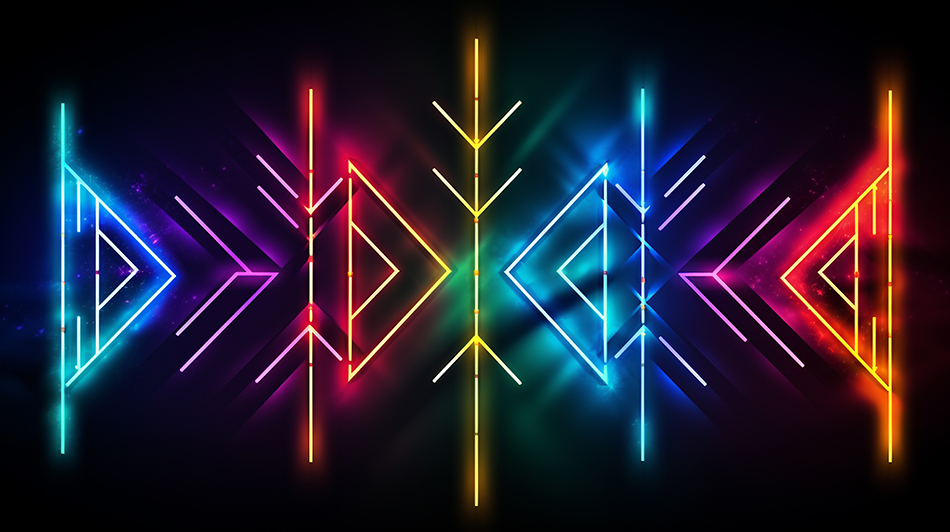Time:2025-05-12
The mini neon light has emerged as a transformative force in lighting technology, merging compact design with dynamic functionality to address challenges across industries. From healthcare to aerospace, these ultra-slim, adaptable systems are redefining how light integrates into modern applications. This article explores their technical innovations, niche use cases, and role in driving sustainable, intelligent solutions for tomorrow’s challenges.
Micro-Engineering and Advanced Material Science
Ultra-Compact Design:
Mini neon lights leverage precision engineering to achieve sub-millimeter profiles, enabling integration into spaces previously deemed impractical. Their slim, flexible form factor allows seamless embedding into medical instruments, wearable tech, or micro-electronics without compromising performance.
Material Innovations:
Biocompatible Silicone: Medical-grade materials ensure safety in implantable devices or surgical tools, resisting bacterial growth and chemical corrosion.
Thermal-Resistant Polymers: Withstand extreme temperatures in industrial ovens, automotive engines, or aerospace components.
Optical Precision:
Advanced diffusion layers eliminate hotspots, delivering a uniform glow ideal for high-resolution displays, laboratory equipment, or artistic installations requiring studio-quality lighting.
Cutting-Edge Applications in Specialized Industries
Medical and Healthcare:
Surgical Navigation: Integrate into endoscopic tools or robotic arms to provide shadow-free illumination during minimally invasive procedures.
Therapeutic Devices: Use adjustable color temperatures in light therapy tools for treating seasonal affective disorder (SAD) or skin conditions.
Aerospace and Defense:
Cockpit Displays: Enhance visibility in low-light conditions with glare-free, customizable backlighting for instrumentation panels.
Submersible Systems: Deploy in underwater drones or submersibles with waterproof, pressure-resistant designs for deep-sea exploration.
Education and Innovation:
STEM Kits: Teach circuitry and optics through hands-on projects using modular mini neon components.
Interactive Museums: Create tactile exhibits where visitors manipulate light patterns to learn about physics or biology.

Smart Integration and Adaptive Control
AI-Driven Automation:
Machine learning algorithms optimize lighting based on real-time data, such as adjusting brightness in smart greenhouses to enhance plant growth or modulating hues in retail displays to match foot traffic trends.
IoT Connectivity:
Sync with building management systems (BMS) to monitor energy usage or automate maintenance alerts in smart cities.
NFC-enabled models allow users to "tap to customize" lighting in public installations or co-working spaces.
Haptic and Voice Control:
Pair with gesture-recognition sensors or voice assistants for hands-free operation in sterile environments like laboratories or cleanrooms.
Sustainability Through Innovation
Closed-Loop Manufacturing:
Utilize recycled silicone and reclaimed metals to reduce raw material consumption, aligning with circular economy principles.
Modular designs enable component reuse across projects, minimizing waste in temporary installations or event decor.
Energy Harvesting Systems:
Integrate with piezoelectric or solar cells to create self-powered lighting for remote sensors, agricultural monitors, or off-grid communities.
Low-Carbon Certifications:
Meet stringent standards like ISO 14064 for carbon-neutral production, appealing to eco-conscious industries and governments.
Competitive Advantages in Evolving Markets
Versus Conventional LEDs:
Directional illumination reduces light pollution in urban areas or sensitive ecosystems.
Enhanced durability in high-vibration or corrosive environments outperforms standard LED strips.
Versus Fiber Optics:
Eliminate complex light injection systems, lowering installation costs and maintenance.
Full RGB customization offers dynamic versatility unmatched by monochromatic fibers.
Future-Forward Trends
Neuroadaptive Lighting:
Develop systems that adjust hues and intensity based on neural feedback for therapeutic or productivity applications.
4D-Printed Neon:
Experiment with additive manufacturing to create shape-shifting designs that adapt to environmental stimuli.
Quantum Dot Integration:
Achieve atomic-level color accuracy for applications in photonic computing or advanced microscopy.
Conclusion
Mini neon lights are not merely illuminating spaces—they are pioneering smarter, safer, and more sustainable interactions with light. Their ability to thrive in extreme conditions and adapt to evolving technologies positions them as critical tools across industries.
For precision-engineered solutions that push boundaries, explore TTKLED’s Mini Neon Series, designed to empower innovation in every beam.